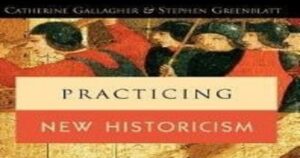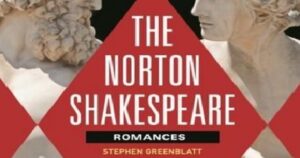15 Literary Theories: Important Principles
It is an attempt to clear all your doubts regarding different literary theories that has been asked time and again in the UGC-NET examination. It is important for you to understand what these literary theories believe in and what are the basic principles on which they work. These literary theories have their own features and principles on which they follow the textual interpretation.
Table of Contents
Here are a list of literary theories with principles and key differences.
15 Literary Theories:
Here’s a brief differentiation between three literary theories that are structuralism, post-structuralism, and deconstruction:
Structuralism:

- Focuses on underlying structures and patterns in language, culture, and society
- Seeks to identify universal laws and principles that govern human behavior and culture
- Emphasizes the importance of objective analysis and scientific methodology
- Examples: Levi-Strauss’s structural anthropology, Saussure’s structural linguistics
Post-Structuralism:
- Reacts against structuralism’s emphasis on objective analysis and universal laws
- Emphasizes the fragmented and provisional nature of knowledge and reality
- Focuses on the individual’s subjective experience and the role of power and ideology in shaping culture and society
- Examples: Michel Foucault’s work on power and knowledge, Jacques Derrida’s critique of Western philosophy
Deconstruction:

- A specific type of post-structuralist analysis that seeks to challenge traditional notions of meaning and interpretation
- Involves close readings of texts to expose underlying contradictions and ambiguities
- Seeks to show how texts undermine their own apparent meanings and how meaning is always in flux
- Examples: Jacques Derrida’s work on deconstruction, Judith Butler’s work on gender and sexuality
Key differences:
- Structuralism seeks to identify universal structures and laws
- Post-structuralism emphasizes the fragmented and subjective nature of knowledge and reality
- Deconstruction is a specific type of post-structuralist analysis that challenges traditional notions of meaning and interpretation.
Here’s a brief differentiation between two prominent literary theories modernism and postmodernism:
Modernism:

- Emphasizes progress, innovation, and experimentation
- Focuses on the individual’s perspective and experience
- Values reason, science, and objective truth
- Seeks to create new forms and styles
- Believes in grand narratives and universal truths
- Examples: Picasso’s art, Joyce’s literature, Bauhaus architecture
Postmodernism:

- Reacts against modernism’s emphasis on progress and objective truth
- Emphasizes diversity, complexity, and ambiguity
- Questions grand narratives and universal truths
- Focuses on the fragmented and provisional nature of knowledge and reality
- Values irony, playfulness, and eclecticism
- Examples: Warhol’s art, Thomas Pynchon’s literature, Deconstructivist architecture
Key differences:
- Modernism seeks to create new forms, while postmodernism challenges existing forms
- Modernism values reason and objective truth, while postmodernism questions these values
- Modernism believes in grand narratives, while postmodernism rejects them
Note that these are broad generalizations, and both modernism and postmodernism are complex and multifaceted movements with many variations and overlaps.
Historicism and New Historicism are two literary theories to literary analysis and historical study. Here’s a brief differentiation between the two:
Historicism:
- Focuses on understanding literary texts within their historical context
- Seeks to reconstruct the past and understand the author’s intentions
- Emphasizes the importance of historical facts and accuracy
- Tends to view literary works as reflections of their historical moment
- Often prioritizes the author’s biography and historical events
- Examples: traditional literary history, historical scholarship
New Historicism:

- Also focuses on historical context, but with a more nuanced approach
- Seeks to understand the power dynamics and social forces that shape literature and history
- Emphasizes the complexity and instability of historical contexts
- Views literary works as engaged in a dialogue with their historical moment
- Often prioritizes the margins and silenced voices of history
- Examples: Michel Foucault’s work on power and knowledge, Stephen Greenblatt’s cultural poetics
Key differences:
- Historicism tends to focus on facts and accuracy, while New Historicism emphasizes power dynamics and social forces.
- Historicism views literature as a reflection of history, while New Historicism sees literature as engaged in a dialogue with history.
- Historicism prioritizes the author’s biography and historical events, while New Historicism prioritizes the margins and silenced voices of history.
Note that these are broad generalizations, and both approaches have evolved over time and have many variations and overlaps.
Cultural Studies and Marxism are two distinct intellectual literary theories that have some overlap but also have significant differences:
Cultural Studies:

- Focuses on the study of culture and its relationship to power, identity, and everyday life
- Examines how culture is produced, consumed, and contested
- Emphasizes the importance of language, media, and representation
- Often prioritizes the perspectives of marginalized groups and challenges dominant narratives
- Seeks to understand the complexities of contemporary culture and its implications for social justice
Marxism:

- Focuses on the study of economic and class relations, and the role of capitalism in shaping society
- Examines the exploitation of labor and the creation of surplus value
- Emphasizes the importance of material conditions and the role of the state in maintaining capitalist power
- Often prioritizes the perspectives of the working class and seeks to understand the potential for revolutionary change
- Seeks to understand the underlying structures of capitalist society and the potential for socialist transformation
Key differences:
- Cultural Studies focuses on culture and identity, while Marxism focuses on economic and class relations.
- Cultural Studies emphasizes language and representation, while Marxism emphasizes material conditions and economic structures.
- Cultural Studies prioritizes the perspectives of marginalized groups, while Marxism prioritizes the perspectives of the working class.
- Cultural Studies seeks to understand contemporary culture, while Marxism seeks to understand the potential for revolutionary change.
It’s important to note that these are broad generalizations, and both Cultural Studies and Marxism have diverse traditions and debates within them. Additionally, there are many areas of overlap and intersection between the two literary theories, and many scholars draw on both traditions in their work.
Cultural Materialism and New Historicism are both literary theories that emerged in the 1980s, but they have distinct differences:
Cultural Materialism:

- Focuses on the material conditions of literature, such as the social, economic, and political context in which it was written
- Emphasizes the role of ideology, power relations, and class struggle in shaping literature
- Seeks to uncover the ways in which literature reflects and challenges dominant ideologies
- Often prioritizes the study of marginalized groups and their cultural productions
- Key figures: Raymond Williams, Terry Eagleton
New Historicism:

- Focuses on the historical context of literature, but with a more nuanced approach than traditional historicism
- Emphasizes the complexity and instability of historical contexts and the ways in which literature interacts with them
- Seeks to understand the power dynamics and social forces that shape literature and history
- Often prioritizes the study of the margins and silenced voices of history
- Key figures: Stephen Greenblatt, Catherine Gallagher
Key differences:
- Cultural Materialism focuses on material conditions and ideology, while New Historicism focuses on historical context and power dynamics.
- Cultural Materialism prioritizes class struggle and marginalized groups, while New Historicism prioritizes the margins and silenced voices of history.
- Cultural Materialism seeks to uncover dominant ideologies, while New Historicism seeks to understand the complexities of historical contexts.
It’s important to note that both these literary theories share some similarities and have influenced each other, but they have distinct differences in their focus and priorities.
Here’s a differentiation between three important literary theories that are feminism, eco-feminism, and queer theory:
Feminism:

- Focuses on gender equality and challenging patriarchal structures
- Seeks to empower women and promote their rights
- Examines how gender roles and stereotypes impact women’s lives
- Goals: equal pay, reproductive rights, and an end to gender-based violence
Eco-Feminism:

- Combines feminist and environmental concerns
- Argues that the exploitation of women and nature are interconnected
- Seeks to promote a more sustainable and equitable relationship between humans and the natural world
- Goals: environmental justice, sustainable development, and challenging dominant narratives around nature and gender
Queer Theory:

- Challenges traditional notions of gender and sexuality
- Examines how power operates through categories like gay/straight, male/female
- Seeks to disrupt and subvert dominant norms around gender and sexuality
- Goals: challenging heteronormativity, promoting LGBTQ+ rights, and exploring the complexity of human sexuality
Key differences:
- Feminism focuses on gender equality, while eco-feminism connects gender with environmental issues.
- Queer theory challenges traditional gender and sexuality categories, whereas feminism and eco-feminism often work within those categories.
- Eco-feminism emphasizes the interconnectedness of human and environmental well-being, whereas feminism and queer theory focus more on human relationships and power dynamics.
These literary theories overlap and intersect, but each has distinct concerns and goals.
Here’s a differentiation between New Criticism, Practical Criticism, and Eco-Criticism:
New Criticism:

- Focuses on the text itself, ignoring external context
- Emphasizes close reading and analysis of literary devices
- Seeks to understand the text’s meaning and structure
- Goals: uncover the text’s inherent meaning, appreciate literary craftsmanship
Practical Criticism:

- Focuses on the reader’s response to the text
- Emphasizes personal interpretation and subjective experience
- Seeks to understand how readers engage with the text
- Goals: develop critical thinking, explore multiple interpretations
Eco-Criticism:

- Focuses on the relationship between literature and the environment
- Examines how texts represent and interact with the natural world
- Seeks to understand the cultural and ecological significance of texts
- Goals: promote environmental awareness, challenge dominant narratives around nature
Key differences:
- New Criticism focuses on the text’s internal meaning, while Practical Criticism emphasizes reader response.
- Eco-Criticism connects texts to the external world, whereas New Criticism and Practical Criticism focus on internal dynamics.
- New Criticism seeks objectivity, while Practical Criticism embraces subjectivity.
- Eco-Criticism prioritizes environmental concerns, whereas New Criticism and Practical Criticism focus on literary and readerly concerns.
These literary theories overlap, but each has distinct emphases and goals.
Read more: Postmodernism: A Critical Perspective







One thought on “15 Literary Theories: Important Principles”